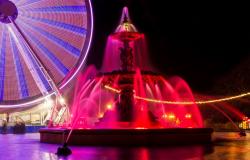
The work of Enedis agents to restore electricity everywhere is complicated by malicious acts. In total, 750 homes are still without electricity, this Monday at midday, in Loire-Atlantique and Vendée after the passage of storm Caetano. There are 600 in Loire-Atlantique, especially in the Saint-Nazaire and Pornic sector, and 150 in Vendée. The intervention of technicians in the field is already complicated by weather conditions, wind and rain. It is even more so because of the action of certain impatient people. Nearly a dozen times during the weekend, people tried to restore power on their own.
“It is prohibited, dangerous and counterproductive”
The malicious acts in question are people who have cut the padlocks placed on the circuit breakers which allow you to cut and restore electricity in a neighborhood, in a street. “These padlocks allow us to secure the network during the intervention of our teams. We are the only ones who can intervene on these operating devices”explains François Luciani, the deputy director of Enedis in Pays de la Loire.
He denounces these behaviors which are “prohibited, dangerous and counterproductive”. Dangerous first “because there could be an uncontrolled return of electrical voltage on the lines during the intervention of our employees. It can also be dangerous for third parties if the electricity is returned in a cable to the ground which is supposed be off”. And counterproductive since instead of accelerating the return of power, it delays Enedis' interventions. The electricity distribution network manager will file a complaint.





